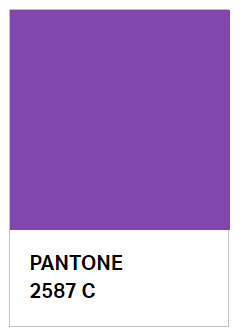29/01/2021
Colours and colour combinations play an important role in branding. In a crowded sector colours have the capacity to function as a powerful visual key, enabling consumers to easily distinguish between different products and brands. Trade mark rights granted for specific colours, or combinations of colours, are, therefore, powerful IP rights. The uncertainty surrounding how similar a colour must be to infringe a colour mark registration works in the favour of the owners of colour trade mark registrations – in extreme cases a colour mark registration may deter competitors from using all shades of that colour on/in relation to the same goods/services. Little surprise then that for some trade mark owners securing registered rights in colour marks has become a key strategic objective.
In September 2020, the General Court issued a judgement in case T‑187/19, concerning a trade mark application by Glaxo Group Ltd (Glaxo) for a shade of purple in respect of inhalers. The General Court, following the earlier decisions of the EUIPO Examination Division and Board of Appeal, held that the colour mark was un-registrable, on account of it being devoid of distinctive character, because in the mind of at least part of the relevant public the colour did not function as an indicator of origin.
Non-traditional trade marks, such as colour marks, are notoriously difficult to register. When it comes to protecting such marks at the EU-wide level, the difficulties facing applicants increase considerably. In this decision, Glaxo, a multinational pharmaceutical company with considerable EU sales under the mark in question and substantial marketing resources at its disposal, was unable to satisfy the evidential burden for proving that its colour mark had become distinctive through use throughout the EU.
Background
In 2015, Glaxo filed an EU trade mark for the colour mark Pantone 2587C covering “pharmaceutical preparations and inhalers for the treatment of asthma and/or chronic obstructive pulmonary disease” in Classes 5 and 10. Glaxo uses Pantone 2587C on respiratory inhalers sold in the EU.

The application was initially rejected under Article 7(1)(b) EUTMR because of a lack of distinctive character, but was later accepted after Glaxo filed evidence of the mark having become distinctive through use under Article 7(3). Glaxo’s evidence consisted of, inter alia, samples of marketing materials (in 15 EU Member States), sales and market share data (in all EU Member States), and survey data and information from various sources demonstrating recognition of the mark among the relevant public (in various EU Member States).
In view of the nature of the mark in question, Glaxo would have expected to file evidence of acquired distinctiveness. All appeared to be going to plan until a third-party filed observations at the EUIPO objecting to acceptance of the mark. In light of these observations the EUIPO reversed its acceptance of Glaxo’s mark, refusing it for lack of distinctiveness (both inherent and acquired). As part of the EUIPO’s decision to refuse Glaxo’s application the Examiner stated that inhalers are classified by colour, with “each colour designating a type of medicinal product”.
Glaxo appealed, unsuccessfully, to the Board of Appeal (BoA).
Based on the evidence, the BoA held that the colour referred to the main active ingredients of the medicines, their intended use and their characteristics. As such, the colour mark was deemed to be descriptive. The BoA also held that in the pharmaceuticals market there was a “specific interest” in colours being kept free for others to use, particularly from the perspective of users of respiratory inhalers. The evidence provided by Glaxo was held to be “insufficient to show that the mark applied for had acquired distinctive character in every Member State.”, a key test for EU-trade marks deemed insufficiently distinctive.
Appeal to the General Court
On appeal to the General Court (GC), Glaxo claimed infringement of Articles 7(1)(b) and 7(3). Under Article 7(1)(b), Glaxo argued that the BoA had been incorrect to find that the relevant public made a connection between the colour and the characteristics of the goods. Moreover, there was no legislative or regulatory requirement or convention restricting the use of colour, said Glaxo.
Glaxo also argued that the goods at issue were marketed in a wide variety of colours and that consumers understood that colour could designate origin. Pantone 2587C had been selected because of its “unusual, unique and memorable” character and because of the fact that it had “not been used by any other competitor”. Whilst Glaxo conceded that a colour code for inhalers did exist in the specific industry sector in question, it argued that such a code did not include the shade of purple it had applied for.
The GC reflected upon the public interest underlying the registration of colour marks and the effect that colour depletion could have on the goods in question, potentially giving rise to a monopoly that would create a competitive advantage for a single trader. The GC then reiterated that “colours and abstract combinations thereof cannot be regarded as being inherently distinctive, save in exceptional circumstances”.
The GC noted that manufacturers do sell inhalers in a variety of colours, but that informally agreed colour conventions existed in the inhaler market. Glaxo was found to have followed such practices when changing the colour of some of its respiratory inhalers in certain EU countries. Once the GC had found such informal colour conventions to exist, and Glaxo to have complied with them, it was an uphill battle for Glaxo in trying to demonstrate that the colour applied for was not part of these conventions and that the goods applied for were such a restricted category that they were exempt from the informal rules.
The GC also found that Glaxo had used various shades of purple on its “disc” and “boot-shaped” inhalers. In some instances, the shade of purple was linked to the strength of the medicines (a darker shade denoting greater strength). This substantially undermined Glaxo’s claim that the relevant public would perceive 2587C as an indication of origin.
In response to Glaxo’s argument that the colour selected is “unusual, unique and memorable”, the GC stated that “novelty or originality are not relevant criteria in the assessment of whether a mark has distinctive character”. The GC held that the BoA had not erred in finding that the mark was devoid of inherent distinctive character citing, as key considerations, the public interest in keeping colours free for other traders and promoting undistorted competition.
Glaxo also argued that the BoA had fallen into error in refusing its colour mark by requiring that the mark possess more than a minimum level of distinctive character. This claim was quickly dismissed. The GC held that it was clear that the BoA had found the mark devoid of any distinctive character whatsoever. The GC further stated that where an applicant claims that a mark is distinctive, the onus falls on the applicant to prove either inherent or acquired distinctiveness, rather than the BoA being required to demonstrate that a mark is entirely descriptive or decorative.
Unsuccessful arguments on acquired distinctiveness
Glaxo also alleged infringement of Article 7(3) EUTMR, in relation to the BoA’s consideration of the evidence that the colour purple had acquired distinctive character through use. Glaxo alleged that the BoA erred when assessing the relevant public, when assessing its survey evidence and in failing to extrapolate from the surveys. This ground of appeal was also unsuccessful.
As regards the relevant public, Glaxo argued that it was sufficient to show that the mark had acquired a distinctive character among a significant section of the relevant public. Glaxo’s focus here was on healthcare professionals, rather than all sections of the relevant public which included both healthcare professionals and patients. The GC rejected this argument, stating that origin function is “as important for the end user of a product as for the intermediaries who are involved in its marketing”. Therefore, the GC held that evidence of acquired distinctiveness had to be provided in respect of patients as well as healthcare professionals, even if the choice of medicinal products was influenced by healthcare professionals.
As regards Glaxo’s survey evidence, this was not capable of demonstrating that the mark had acquired distinctive character through use. Consequently, the results could not be extrapolated to the Member States where direct evidence of acquired distinctiveness did not exist. The GC noted that Glaxo’s opinion surveys were carried out among GPs, pharmacists and patients in 15 Member States. However, the surveys targeting patients covered only 10 Member States and approximately 1,500 individuals. As the survey evidence was not supported by information that would allow an assessment of how representative the patient sample was, the probative value of the surveys could not be assessed. The numbers of patients and GPs surveyed were considered “much too low to be reliable”.
Other criticisms of Glaxo’s evidence included only one colour sample being presented to survey participants and different colour shades being used in the surveys. Other evidence referred to the colour purple in general terms, rather than the specific Pantone shade at issue. Without direct evidence of distinctive character having been acquired, Glaxo’s sales figures and advertising materials, while significant, did not demonstrate that the relevant public perceived the mark as an indication of origin.
Comment
This case again highlights that colour marks will not be considered inherently distinctive, save in exceptional circumstances. Therefore, in many circumstances those seeking protection for colour marks should be prepared to show that the colour has become distinctive as a result of the use made of it.
The GC’s decision also reaffirms that novelty or originality are not relevant criteria in the assessment of whether a colour mark has distinctive character. The distinctiveness of a trade mark is always assessed with reference to the relevant public and the key is whether they perceive a mark as indicating the commercial origin of goods or services.
This is also another case that highlights the difficulty in proving acquired distinctiveness across all Member States of the EU. When attempting to demonstrate that a mark has acquired distinctiveness under Article 7(3) EUTMR, without the support of direct evidence of distinctive character, even significant sales figures will not demonstrate that the relevant public perceives a mark as an indication of commercial origin.
Key to this case was the perception of colour among users of respiratory inhalers, who often identify the colour of an inhaler with the effect of the associated medicine: a blue-coloured pump being recognised as a ‘preventer’ treatment and a purple-coloured pump being recognised as a ‘reliever’ treatment. Among this section of the relevant public colour plays no origin function, and this was reflected in the evidence and the practices of the relevant sector. In light of this, Glaxo’s evidence fell short of the required standard.
This article is for general information only. Its content is not a statement of the law on any subject and does not constitute advice. Please contact Reddie & Grose LLP for advice before taking any action in reliance on it.




